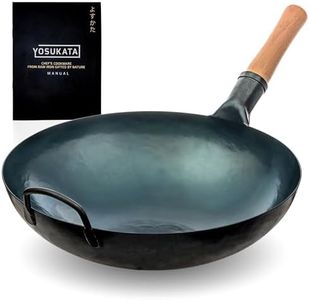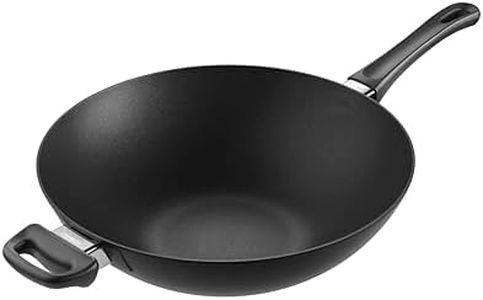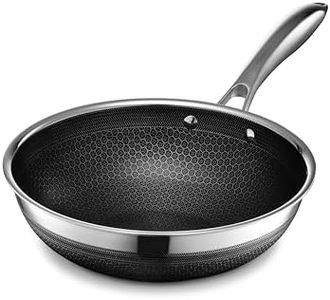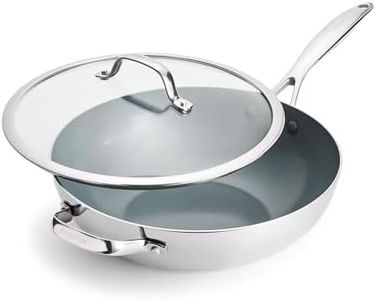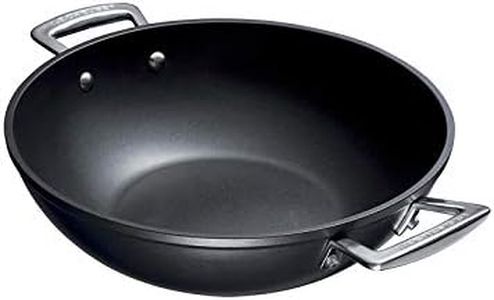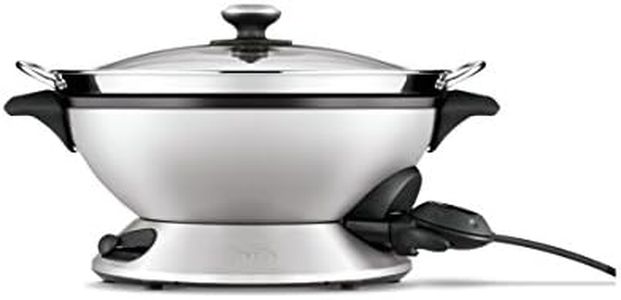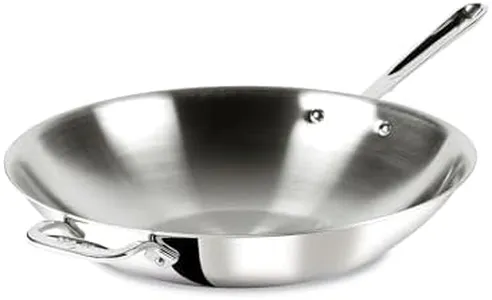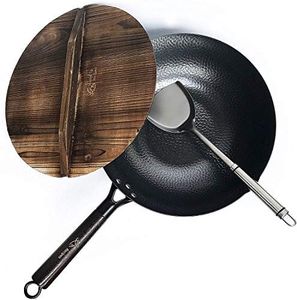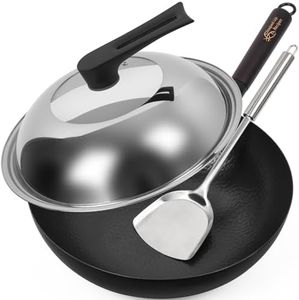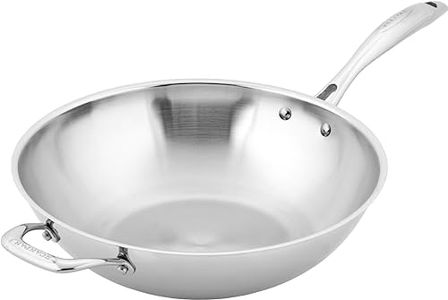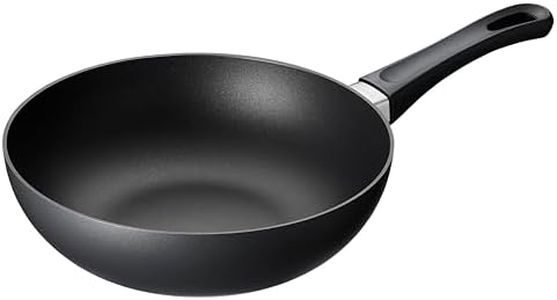We Use CookiesWe use cookies to enhance the security, performance,
functionality and for analytical and promotional activities. By continuing to browse this site you
are agreeing to our privacy policy
10 Best Woks Stir Fry Pans
From leading brands and best sellers available on the web.Buying Guide for the Best Woks Stir Fry Pans
Choosing the right wok or stir-fry pan matters because it affects how well you can cook delicious stir-fried meals at home. Different types and features can make cooking easier or harder, depending on what and how you like to cook. By considering a few key characteristics, you can select a wok or stir-fry pan that fits your kitchen, your cooking style, and the dishes you want to master.MaterialThe material of a wok or stir-fry pan plays a big role in how it heats up, retains heat, and reacts with food. Common materials include carbon steel, cast iron, stainless steel, and nonstick-coated surfaces. Carbon steel is popular for its quick heating and responsive temperature changes, which are great for authentic stir-frying, but it needs seasoning and care to prevent rust. Cast iron holds heat well and is good for deep frying or stews, but it's heavy and takes longer to heat. Stainless steel is easy to maintain, though less traditional, and may not heat as evenly. Nonstick surfaces help prevent food from sticking but can't handle the super-high temperatures of true stir-frying. Your cooking habits—whether you prefer easy care, authentic results, or versatility—should guide your pick.
Size and ShapeWoks and stir-fry pans come in various diameters, usually measured in inches. Smaller options (about 10-12 inches) are great for one or two people and fit well on standard stoves, while medium to large woks (14-16 inches or more) suit family-sized meals or entertaining but may be challenging to maneuver or fit on a small burner. The classic wok shape is round-bottomed, which is ideal for tossing food at high heat, but may need a wok ring for stability on certain stovetops. Flat-bottomed woks and stir-fry pans are more compatible with most home stoves and provide broader direct contact with electric and induction cooktops. Choose size and shape based on your usual cooking volume and your stove type.
Handle DesignHandles come in two main types: a single long handle (for tossing and easy movement) and a combination of a long handle with a small opposite helper handle (for heavy lifting or balanced pouring). Traditional woks often have two small looped handles for carrying, ideal for large or heavier pans. If you plan to stir-fry by tossing ingredients, a long handle can make this easier. For very large or cast iron pans, helper handles offer more control. Select a handle design that matches your hand strength and the cooking techniques you use.
Thickness and WeightThe thickness of the wok or pan affects heat retention and responsiveness. Thinner pans (generally carbon steel) heat up and cool down quickly, letting you adjust temperature easily—a must for quick stir-frying—but can be less durable if too thin. Heavier, thicker pans (like cast iron) provide steady, even heat, great for searing or slow-cooked dishes, but are less agile for tossing food. If you like quick, high-heat cooking, thinner options are often better. For steadier cooking and more forgiving heat, thicker pans can be more suitable.
Lid and AccessoriesSome woks and stir-fry pans come with lids, which are useful for steaming or simmering dishes, and may include accessories like spatulas or steaming racks. Whether you need a lid depends on your cooking style—if you mostly stir-fry at high heat, a lid isn’t crucial, but for more versatile recipes, it can be helpful. Consider included extras only if you’ll actually use them.
